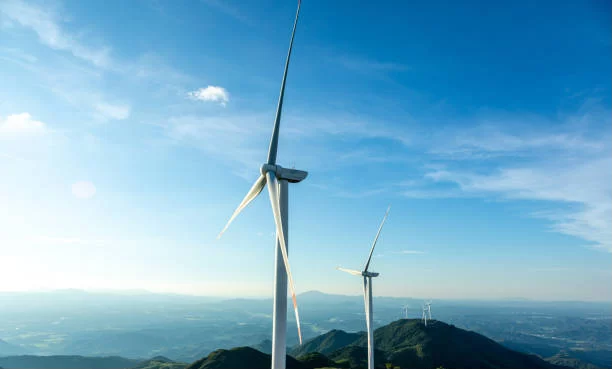Harnessing Nature's Power: The Environmental Benefits of windmill power plant
Windmill power plant, harnessing the natural force of wind to generate electricity, have emerged as a pivotal component of renewable energy strategies worldwide. This article explores the environmental advantages offered by windmill power plant, examining their impact on climate change mitigation, biodiversity, and local ecosystems.

Climate Change Mitigation
One of the most compelling arguments for windmill power plant lies in their role in mitigating climate change. Unlike fossil fuels, wind power generates electricity without emitting greenhouse gases such as carbon dioxide (CO2) and methane. The deployment of wind turbines helps reduce reliance on coal, oil, and natural gas, thus lowering overall greenhouse gas emissions. This shift is crucial in combating global warming and meeting international climate targets, such as those outlined in the Paris Agreement.
Moreover, wind energy’s lifecycle emissions—from manufacturing to operation—are significantly lower compared to conventional fossil fuel-based power plants. Studies indicate that over its operational lifetime, a wind turbine can offset more than 20 times the carbon emissions produced during its manufacture and installation. This makes wind power a potent tool in the transition to a low-carbon economy.
Conservation of Natural Resources
Wind energy also contributes to the conservation of natural resources. Unlike fossil fuels, which are finite and require extraction through environmentally disruptive methods, wind is a renewable resource that replenishes naturally. By harnessing wind power, societies can reduce their reliance on finite fossil fuels, thus preserving these resources for future generations.
Furthermore, wind farms have a minimal impact on water resources compared to conventional power plants. Unlike coal, nuclear, and natural gas plants that require significant water for cooling purposes, wind turbines use virtually no water during their operation. This aspect is particularly critical in regions prone to water scarcity, where minimizing water use in energy production is essential for sustainable development.
Preserving Biodiversity
The impact of windmill power plant on biodiversity is a subject of ongoing research and debate. While initial concerns focused on potential bird and bat collisions with turbine blades, studies indicate that properly sited wind farms can minimize these risks through strategic planning and technology advancements. For example, studies have shown that the installation of radar systems and avian deterrents can reduce bird fatalities significantly.
Moreover, the land occupied by wind turbines can often be shared with agricultural activities or even serve as a habitat for certain wildlife species. This dual-use approach, known as agrivoltaics or energy farming, allows land to be used efficiently for both renewable energy production and biodiversity conservation.
Economic Benefits and Community Empowerment
In addition to environmental advantages, wind energy brings substantial economic benefits. The growth of wind farms creates jobs in manufacturing, construction, maintenance, and research sectors, boosting local economies. Furthermore, wind energy projects often provide new revenue streams for rural communities through lease payments to landowners hosting wind turbines and local tax revenues.
Community engagement and empowerment are integral to the success of wind energy projects. Developers frequently collaborate with local stakeholders to address concerns, ensure transparency, and maximize the positive impacts of wind farms on surrounding communities. This participatory approach not only enhances project acceptance but also fosters a sense of ownership and pride in renewable energy initiatives.
Challenges and Future Directions
Despite its many benefits, wind energy faces challenges that require ongoing innovation and collaboration. Issues such as intermittency (variations in wind availability), grid integration, and public perception remain significant considerations for further development. Advances in energy storage technologies, smart grid infrastructure, and predictive analytics are crucial in addressing these challenges and optimizing the reliability and efficiency of wind energy systems.
Looking ahead, the future of wind energy appears promising. Technological advancements continue to drive down costs and increase efficiency, making wind power increasingly competitive with traditional fossil fuels. Policy support, market incentives, and international cooperation are vital in accelerating the global deployment of wind energy and achieving a sustainable energy future.
Conclusion
Windmill power plant exemplify the potential of harnessing natural forces to meet humanity’s energy needs while mitigating environmental impacts. By displacing fossil fuels, conserving natural resources, and fostering economic development, wind energy contributes significantly to climate change mitigation, biodiversity conservation, and sustainable development goals. As countries worldwide commit to reducing greenhouse gas emissions and transitioning to renewable energy sources, wind farms stand as a beacon of hope for a cleaner, greener future.
In conclusion, the environmental benefits of wind farms underscore their pivotal role in the global energy transition and highlight the importance of continued investment and innovation in renewable energy technologies.
